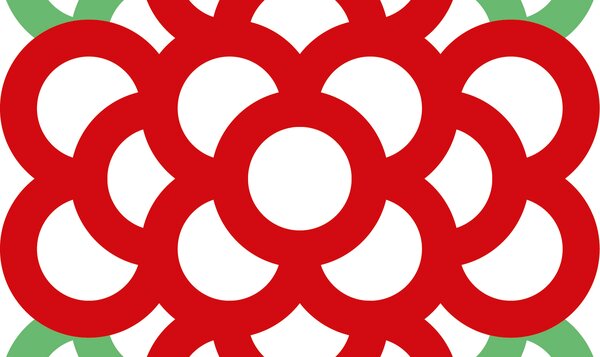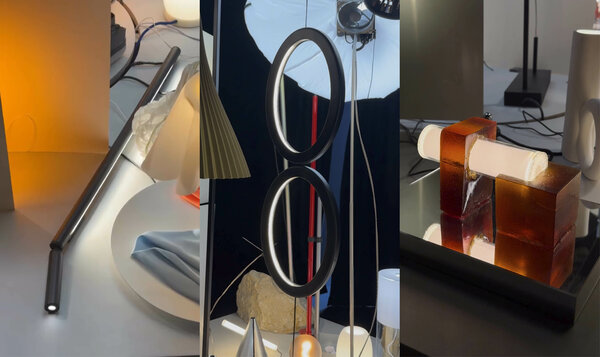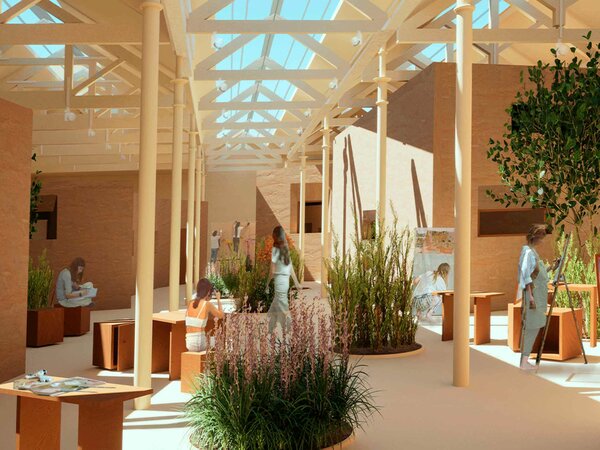The jury emphasised the high level of all the proposals, in particular highlighting the attention to detail of the winning thesis

The Enric Miralles Foundation rewards the coherence and sensitivity of “Cel·la”
Date
22 July 2024
In an emotional ceremony held on 12 June at the Fundació Enric Miralles, “Cel·la” by Maria Alonso took home the 2024 IED Enric Miralles and Benedetta Tagliabue Award for the Best Interior Design Thesis at IED Barcelona. The proposal, a temporary shelter for artists inspired by monastic cells located in the Fabra y Coats Factory and designed sustainably using the rammed earth construction technique, won the award “for its coherence between discourse and aesthetics and its high level of experimentation and sensitivity”.
In this sense, the jury, composed of the President of the Fundació Enric Miralles and Director of EMBT Architects, Benedetta Tagliabue, as well as the members of the Board of Trustees of the Fundació Enric Miralles, among whom, the Architect Caterina Miralles very positively highlighted the fact that the student “has even designed the furniture of the space, showing a level of control and attention to detail that is essential as an interior designer, especially in projects of this size, where it is essential to be able to communicate such a degree of complexity and abstraction effectively in images”.
In this second edition of the IED Enric Miralles and Benedetta Tagliabue Award, in which nine proposals were competing for the accolade, “all of them of the highest level”, the jury also wanted to recognise two other works with two honourable mentions. They are:
“Move with the Sun” by Ana Carolina Bustamente, “for her fantastic sensitivity with drawing that has been able to bring architectural language to her field and to her discourse”. This is a project inspired by the observation of solar cycles and the ability of living beings to adapt to them, which fuses interior design, sustainability and human well-being in a holistic retreat space designed to make the most of natural light and promote a connection with nature. The student located it in Valldaura Labs.
“Saving by Sharing” by Arola Velasco, “given its indisputable quality and the fact that it opens up an interesting and very positive dialogue with other areas of design”. Indeed, the student included the project “Amuza” by Lucienne de Waal (Product Design) — a game system designed specifically for Generation Alpha and intended to be installed in shared spaces, such as the one proposed by Velasco — in her work: a social housing project for single-parent families suffering from energy poverty, located in Ca l’Alier.
The origin of the projects: “Energy. Designing positive”
In line with UN Sustainable Development Goal 7, which aims to ensure access to clean and affordable energy as a key to the development of cities, businesses, communication, education, healthcare and transport, this year IED Barcelona Design School asked final-year students of the Bachelor’s Degree in Design specialising in Interior Design to think of new materials or systems to improve the energy efficiency of buildings, reduce energy consumption, or reuse biomass, solar or kinetic energy as possible alternative energy sources.
To do this, it proposed three emblematic buildings in Barcelona as locations, strategically positioned in different areas of the city: Ca l’Alier, in the Sant Martí neighbourhood; Fabra i Coats, in the Sant Andreu neighbourhood; and the Masía de Valldaura in Horta-Cerdanyola.
Taking diverse social problems and realities as a starting point, such as energy poverty, the hyperconnection of Generation Alpha, the value of plants, food waste, co-housing, and mental health problems, the students explored current and future scenarios in their final theses.
A selection of nine of these projects was exhibited at the Fundació Enric Miralles from 5 to 13 June, coinciding with the 2024 Architecture Weeks organized by Barcelona City Council and the Fundació Mies van der Rohe.
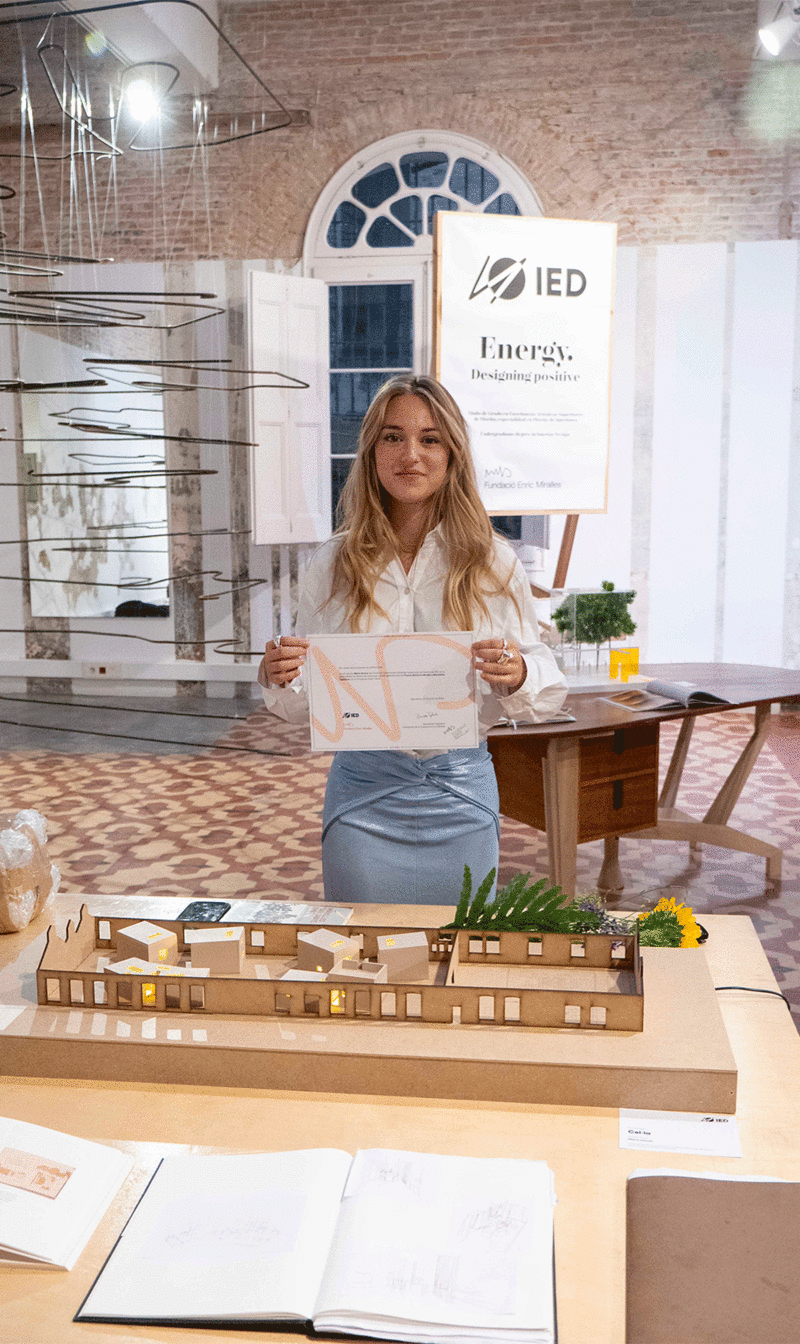
Maria Alonso, Winner with “Cel·la”.

Arola Velasco Moreno, Honorable Mention with “Saving by sharing”.
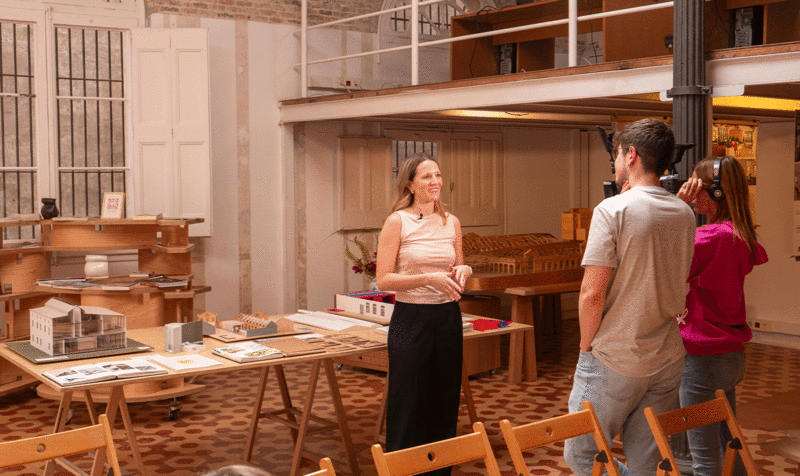
Ana Carolina Bustamante presents “Move with the sun” to the media, which received an Honorable Mention.







